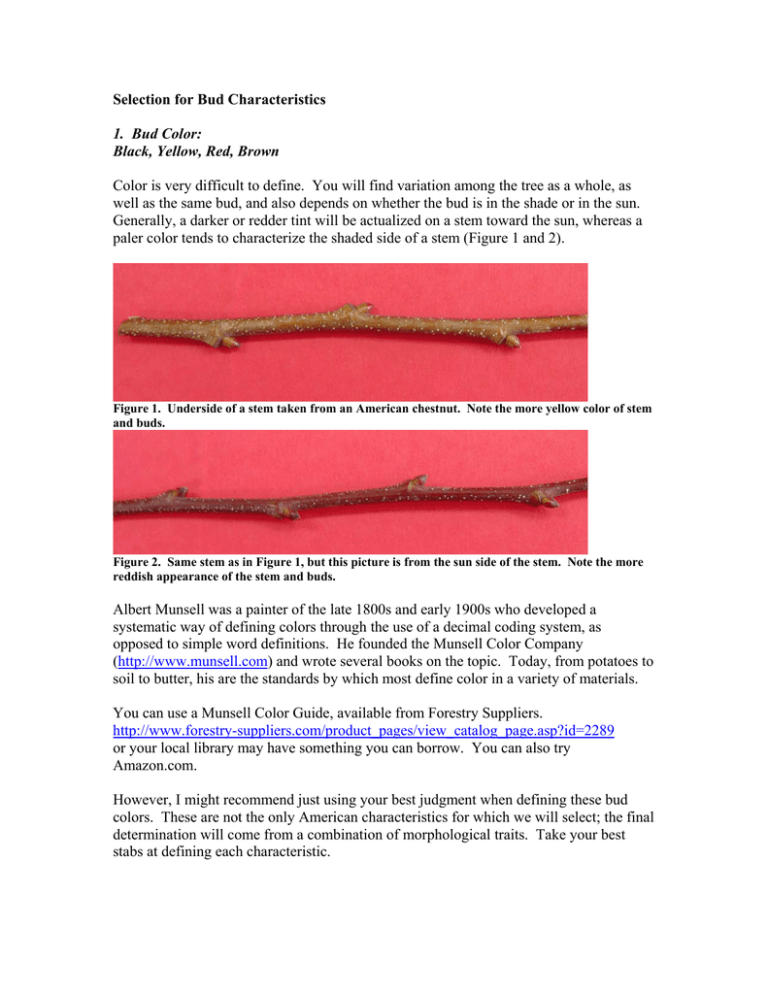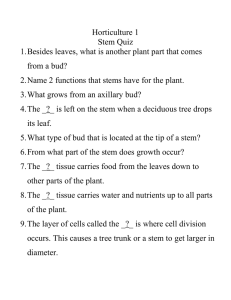Selection for Bud Characteristics 1. Bud Color: Black, Yellow, Red
advertisement

Selection for Bud Characteristics 1. Bud Color: Black, Yellow, Red, Brown Color is very difficult to define. You will find variation among the tree as a whole, as well as the same bud, and also depends on whether the bud is in the shade or in the sun. Generally, a darker or redder tint will be actualized on a stem toward the sun, whereas a paler color tends to characterize the shaded side of a stem (Figure 1 and 2). Figure 1. Underside of a stem taken from an American chestnut. Note the more yellow color of stem and buds. Figure 2. Same stem as in Figure 1, but this picture is from the sun side of the stem. Note the more reddish appearance of the stem and buds. Albert Munsell was a painter of the late 1800s and early 1900s who developed a systematic way of defining colors through the use of a decimal coding system, as opposed to simple word definitions. He founded the Munsell Color Company (http://www.munsell.com) and wrote several books on the topic. Today, from potatoes to soil to butter, his are the standards by which most define color in a variety of materials. You can use a Munsell Color Guide, available from Forestry Suppliers. http://www.forestry-suppliers.com/product_pages/view_catalog_page.asp?id=2289 or your local library may have something you can borrow. You can also try Amazon.com. However, I might recommend just using your best judgment when defining these bud colors. These are not the only American characteristics for which we will select; the final determination will come from a combination of morphological traits. Take your best stabs at defining each characteristic. Other bud characteristics that we define are 1. Bud Shape: Round or Cylindrical and 2. Bud Tip: Pointed or Flat Figure 3. Yellow, Cylindrical and Pointed (European x Chinese hybrid) Figure 4. Red, Round and Pointed (European x Japanese hybrid) Figure 5. Brown. Round and Flat (European x Japanese hybrid) Figure 6. Red, Cylindrical, Pointed (American) Figure 8. Yellow, Round, and Flat (Nanking Chinese) ( Figure 7. Black, Round, Pointed (Japanese) Figure 9. Red, Round, Pointed BC3F2, Meadowview) Again, you’re going to find a lot of diversity even in the same tree, possibly on the same branch when you go to define these characteristics. Just make the best judgement you can. Combined with other morphological traits, we will surely make the best selection for American type among your best blight-resistant progeny. Figure 10. Diversity of dormant twigs taken from BC3F2 progeny at Penn State University Arboretum.

